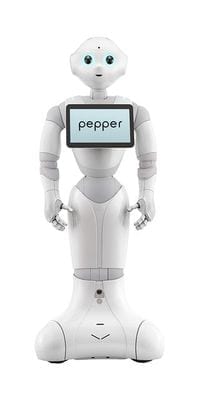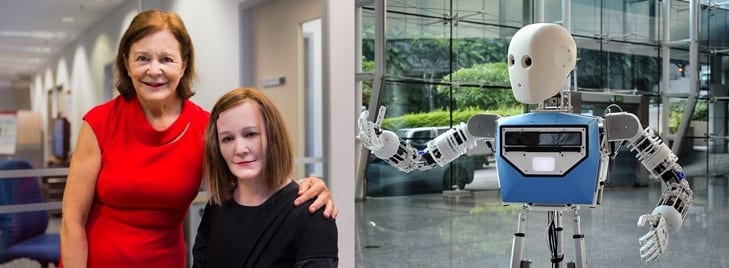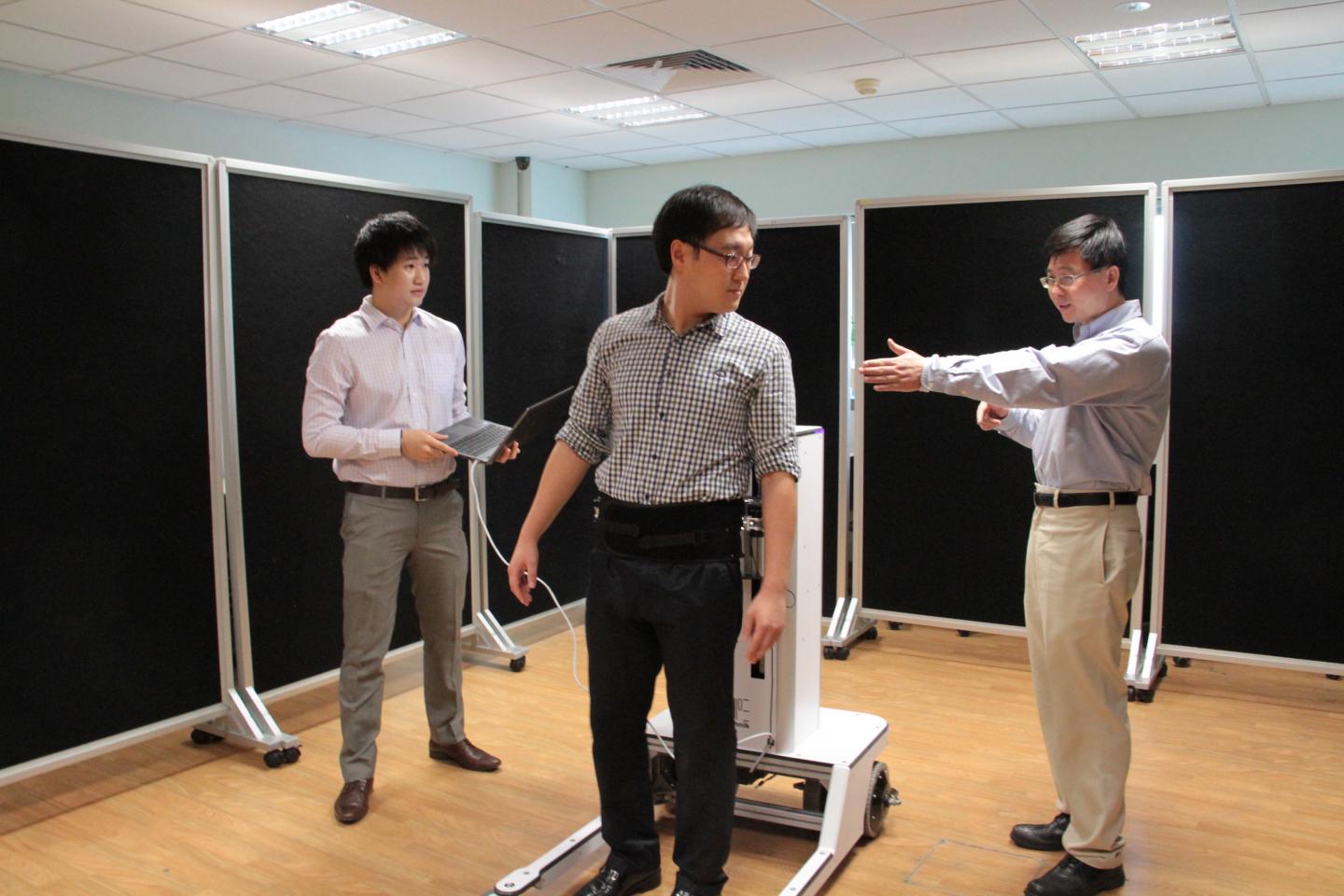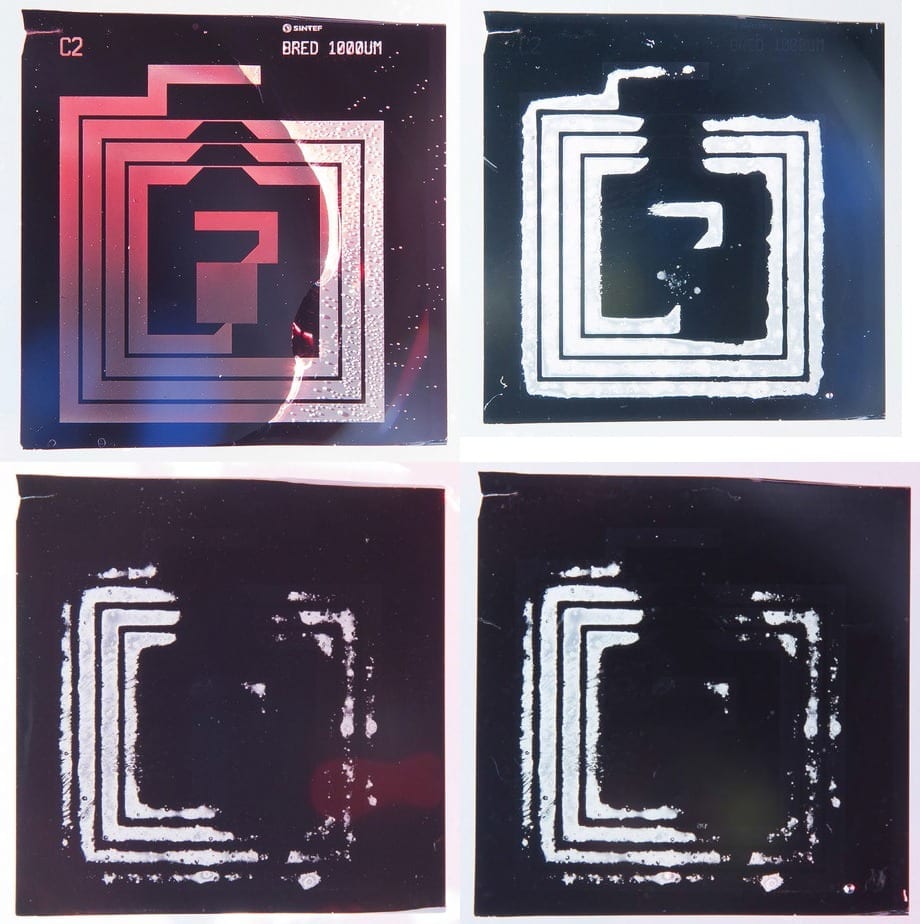
As an actress, producer, director and theatre arts lecturer at The University of Texas at Arlington, Julienne Greer knows the techniques that help draw people’s deepest emotions to the surface. Now, she’s building on her experience and research to help scientists and robotics engineers better understand the human experience so that they can build more responsive robots.
Greer, who holds a master’s degree in media arts and a doctorate in humanities, recently authored the paper, “Building emotional authenticity between humans and robots.” In it, she referenced a robot named ‘Pepper,’ which has been widely hailed as an emotionally responsive humanoid robot that understands feelings, and is meant solely to emotionally interact with people. When Pepper was unveiled in Japan in June 2014, SoftBank CEO Masayoshi Son said that his company’s aim was to “develop affectionate robots that can make people smile.” In her paper, Greer noted in response that when humans make certain gestures, such as a smile, it could mean that they are “happy.” It could also mean that they are “angry,” but smiling in order to make themselves less aggressive in tense situations.
Scholars intrigued by Greer’s work, invited her to present her paper at the Sixth International Conference on Social Robotics held in Sydney, Australia last month. They also requested that she lead attendees in a session on enhancing the relationship between human beings and emotional robots. “Most people only think of engineers and scientists when it comes to robots, which I truly believe will one day be a part of our normal, day-to-day lives,” Greer said. “With that in mind, don’t we want the people who design this technology to also consider how human beings express feelings and interact with one another in addition to considering how a robot should be wired?”
Greer’s expertise is in the performance technique method acting, so she led the workshop attendees through several brief method exercises. One exercise consisted of verbally guiding the participants through the re-creation of drinking a beverage through the engagement with and discovery of individuals’ sensory responses. “Although it seems simple, it is a rather complex undertaking as it involves shuttling their attention between all of their senses—sight, hearing, taste, smell, touch, as well as an inner kinesthetic sense of the muscles used in swallowing,” Greer said. “By utilizing all of the senses, I improve the chance the subject will have at least one significant sensory experience.”
During the question and answer session afterwards, many of the participants spoke about their experiences. One learned their strongest sensory response of the re-creation of the beverage was the weight of the liquid in the glass and how the balance of the glass was altered as the liquid swirled within it. “The fascinating aspect of sensory work is how it opens the imagination to the cognitive work our senses do all day, every day to connect us to our world. The subject becomes aware of new sensory stimuli, which in turn creates an emotional response.“ Greer said this is significant. The categorization of behaviors or gestures and an understanding of how they create specific emotions in humans will allow the engineers and roboticists to apply those gestures and behavior to the programming of robots.
The Latest on: Social robots
[google_news title=”” keyword=”Social robots” num_posts=”10″ blurb_length=”0″ show_thumb=”left”]
via Google News
The Latest on: Social robots
- Robot dogs armed with AI-targeting rifles undergo US Marines Special Ops evaluationon May 8, 2024 at 12:59 pm
The United States Marine Forces Special Operations Command ( MARSOC) is currently evaluating a new generation of robotic "dogs" developed by Ghost Robotics, with the potential to be equipped with gun ...
- Elon Musk's Tesla could soon have one billion 'humanoid robots' in circulationon May 8, 2024 at 8:17 am
Tesla CEO Elon Musk has said there is 'no real limit' to the value of the 'humanoid robots' his company is building, and has suggested that one billion of his cyborgs could soon be in circulation ...
- Swarms of miniature robots clean up microplastics and microbes, simultaneouslyon May 8, 2024 at 8:14 am
When old food packaging, discarded children's toys and other mismanaged plastic waste break down into microplastics, they become even harder to clean up from oceans and waterways. These tiny bits of ...
- Social Media Still isn't a Safe Space For Children. A Crackdown is Underwayon May 7, 2024 at 4:02 pm
Protecting children from social media content that may harm their mental health is a minefield. One country has a new plan in place to "tame toxic algorithms." ...
- China has launched a secret robot to the far side of the moon, new Chang'e 6 photos revealon May 7, 2024 at 10:42 am
A tiny, previously undisclosed lunar rover has been spotted strapped to the side of China's moon-bound Chang'e 6 lander in newly released pre-launch photos. The true purpose of the rover, which is ...
- ‘Creepy’ Boston Dynamics robot dog dances in glittery blue costume: ‘Nightmare fuel’on May 2, 2024 at 7:11 am
A video of Boston Dynamics’ iconic robo-dog Spot dancing in a blue dog costume freaked out social media users with many labeling the canine cosplay “fuel for nightmares.” “Sparkles is a custom costume ...
- Social Robotics Show Potential in Pediatric Cancer Patients During Hospitalizationon April 30, 2024 at 5:00 pm
Social robotics is a flexible learning strategy that can be adapted to different settings. The strategy stimulates curiosity and, in hospitalized children, patient participation with their care and ...
- Sophia the Robot Falls in Greeceon April 30, 2024 at 12:00 am
Sophia, the globally renowned humanoid AI robot, suffered a malfunction in Thessaloniki, Greece when she fell down a step at an exhibition center. The robot that is currently touring Greece fell at ...
- Humanoid robots are learning to fall wellon April 28, 2024 at 1:15 pm
The savvy marketers at Boston Dynamics produced two major robotics news cycles last week. The larger of the two was, naturally, the electric Atlas ...
- People, Not Design Features, Drive Social Interactions for Robots, Finds Cornell University Studyon April 24, 2024 at 11:19 pm
It takes a village to nurture social robots.Researchers who develop social robots – ones that people interact with – focus too much on design features and not enough on sociological factors, like ...
via Bing News










